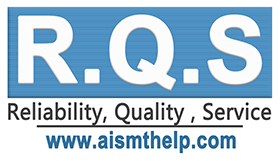Causes and prevention measures of surface mount soldering defects
- Poor wetting
Poor wetting means that during the welding process, the solder and the substrate welding area do not generate an intermetallic reaction after being wetted, resulting in missed welding or insufficient welding failure. The reason is mostly caused by the surface of the soldering area being contaminated, or stained with solder resist, or the metal compound layer forming on the surface of the joint. For example, there are sulfides on the surface of silver, oxides on the surface of tin, etc., which will cause poor wetting. . In addition, when the residual aluminum, zinc, cadmium, etc. in the solder exceeds 0.005%, the activity level is reduced due to the moisture absorption of the flux, and poor wetting may also occur. During wave soldering, if gas exists on the surface of the substrate, this failure is also likely to occur. Therefore, in addition to implementing appropriate welding processes, anti-fouling measures must be taken on the substrate surface and component surface, appropriate solder must be selected, and reasonable welding temperature and time must be set. - Bridge connection
The causes of bridging are mostly caused by excessive solder or serious sagging after solder printing, or the size of the substrate soldering area is out of tolerance, SMD mounting offset, etc. When SOP and QFP circuits tend to be miniaturized, bridging will cause Electrical short circuit affects the use of the product.
As corrective measures: - Prevent edge sagging during solder paste printing.
- The size setting of the substrate soldering area must meet the design requirements.
- The mounting position of SMD must be within the specified range.
- The substrate wiring gap and solder resist coating accuracy must meet the specified requirements.
- Develop appropriate welding process parameters to prevent mechanical vibration of the welding machine conveyor belt.
- Cracks
When the welded PCB has just left the welding area, due to the difference in thermal expansion between the solder and the joined parts, under the influence of rapid cooling or heating, the SMD will basically produce micro-cracks due to the influence of solidification stress or shrinkage stress. The welded PCB will During punching and transportation, the impact stress on SMD must also be reduced. bending stress.
When designing surface mount products, you should consider narrowing the thermal expansion gap and correctly set heating and cooling conditions. Choose solder with good ductility. - Solder ball
The generation of solder balls often occurs when the solder is scattered due to rapid heating during the soldering process. In addition, it is misaligned with the printing of the solder and causes sagging. Pollution, etc. are also involved.
Prevention measures: - Avoid excessive heating during welding and perform welding according to the set temperature rise process.
- Delete defective products such as solder printing sagging and misalignment.
- The use of solder paste must meet the requirements without poor moisture absorption.
- Implement the corresponding preheating process according to the welding type.
- Suspension Bridge (Manhattan)
A defective suspension bridge means that one end of the component leaves the soldering area and stands upward or upright. The reasons are excessive heating speed, uneven heating direction, solder paste selection, preheating before soldering, and soldering area size. SMD itself is related to its shape and wettability.
Prevention measures: - The storage of SMD must meet the requirements.
- The length of the substrate soldering area must be appropriately sized.
- Reduce the surface tension generated on the SMD end when the solder is melted.
- The printing thickness of the solder must be set correctly.
- Adopt reasonable preheating methods to achieve uniform heating during welding.
Send us an inquiry , we will get back to you soon ,thank you!

